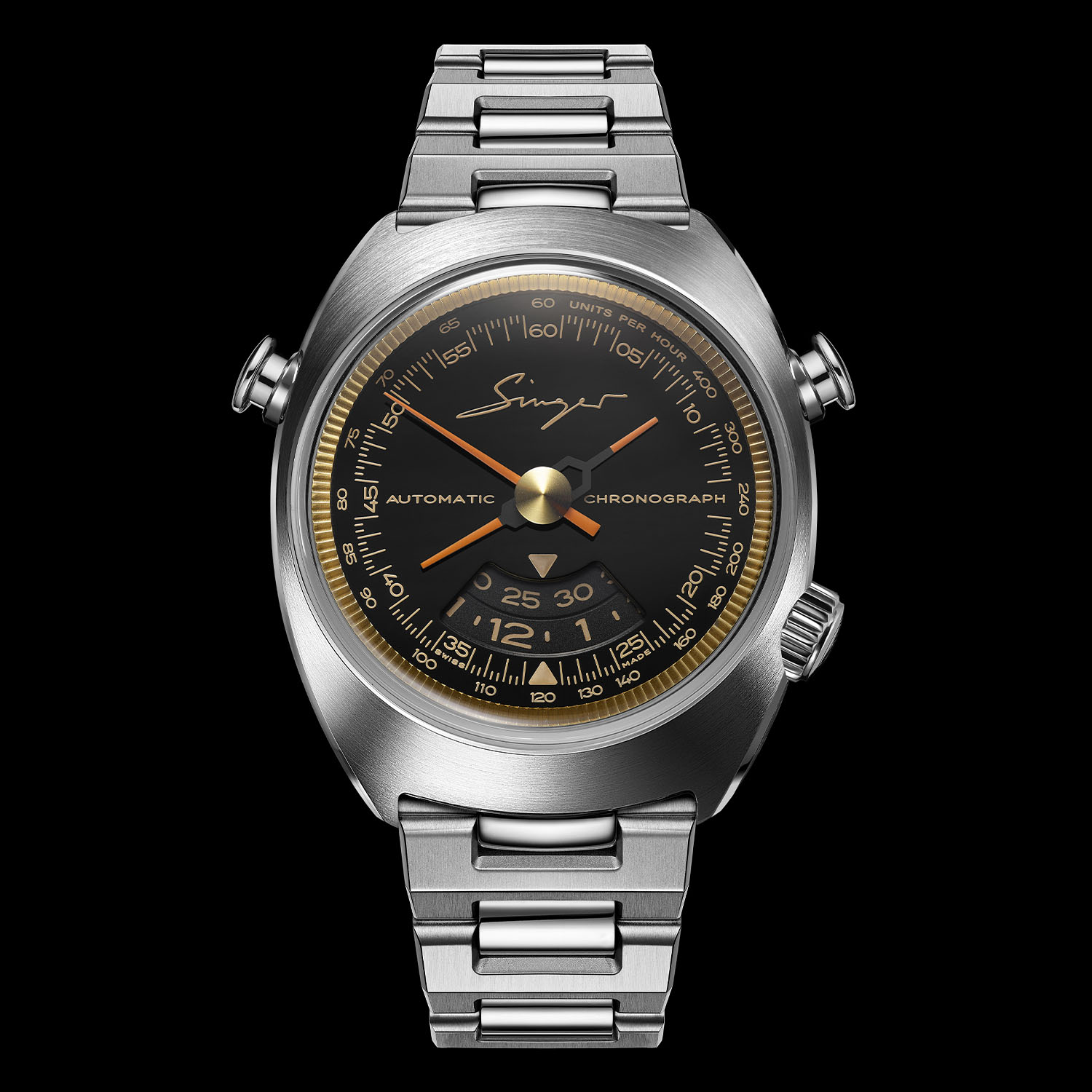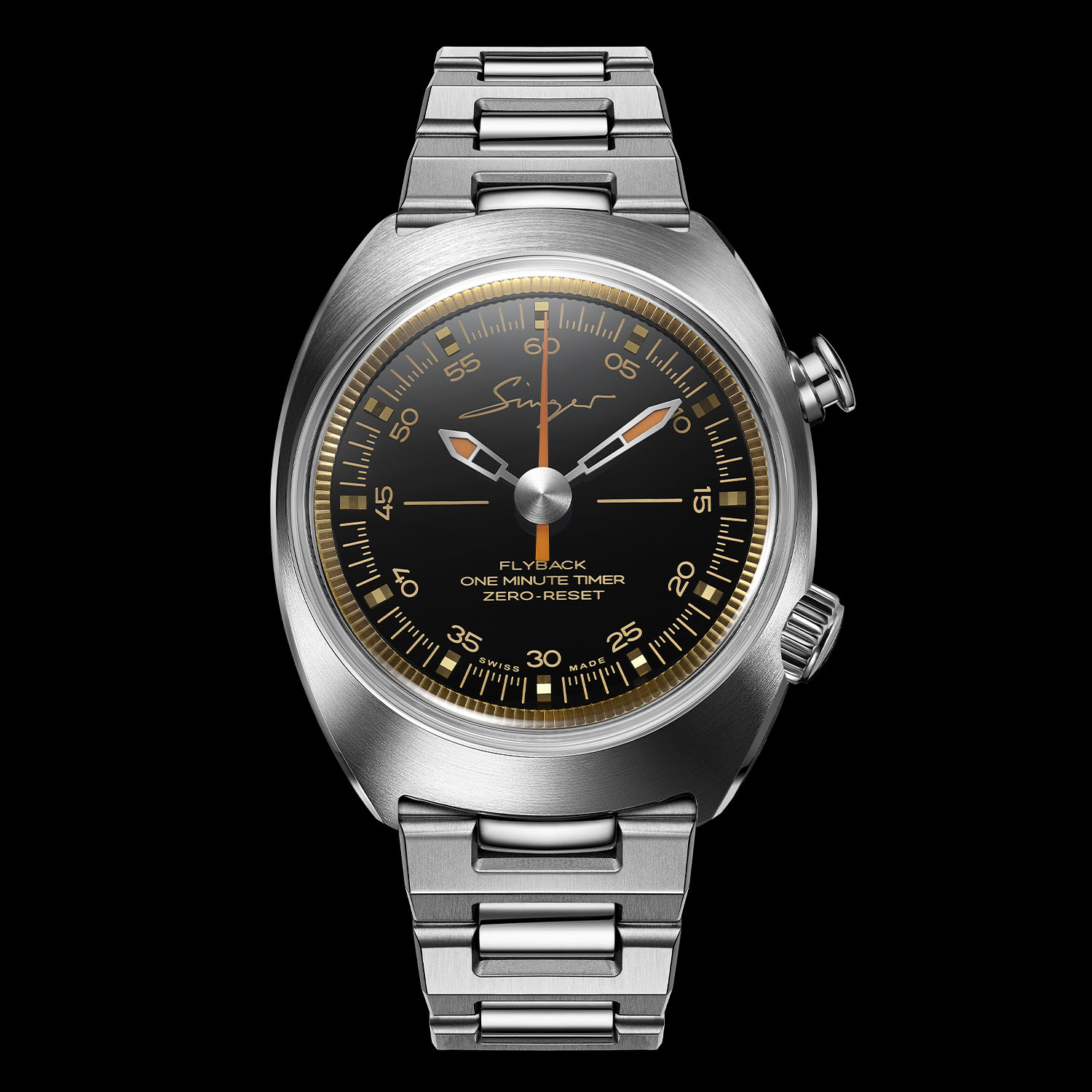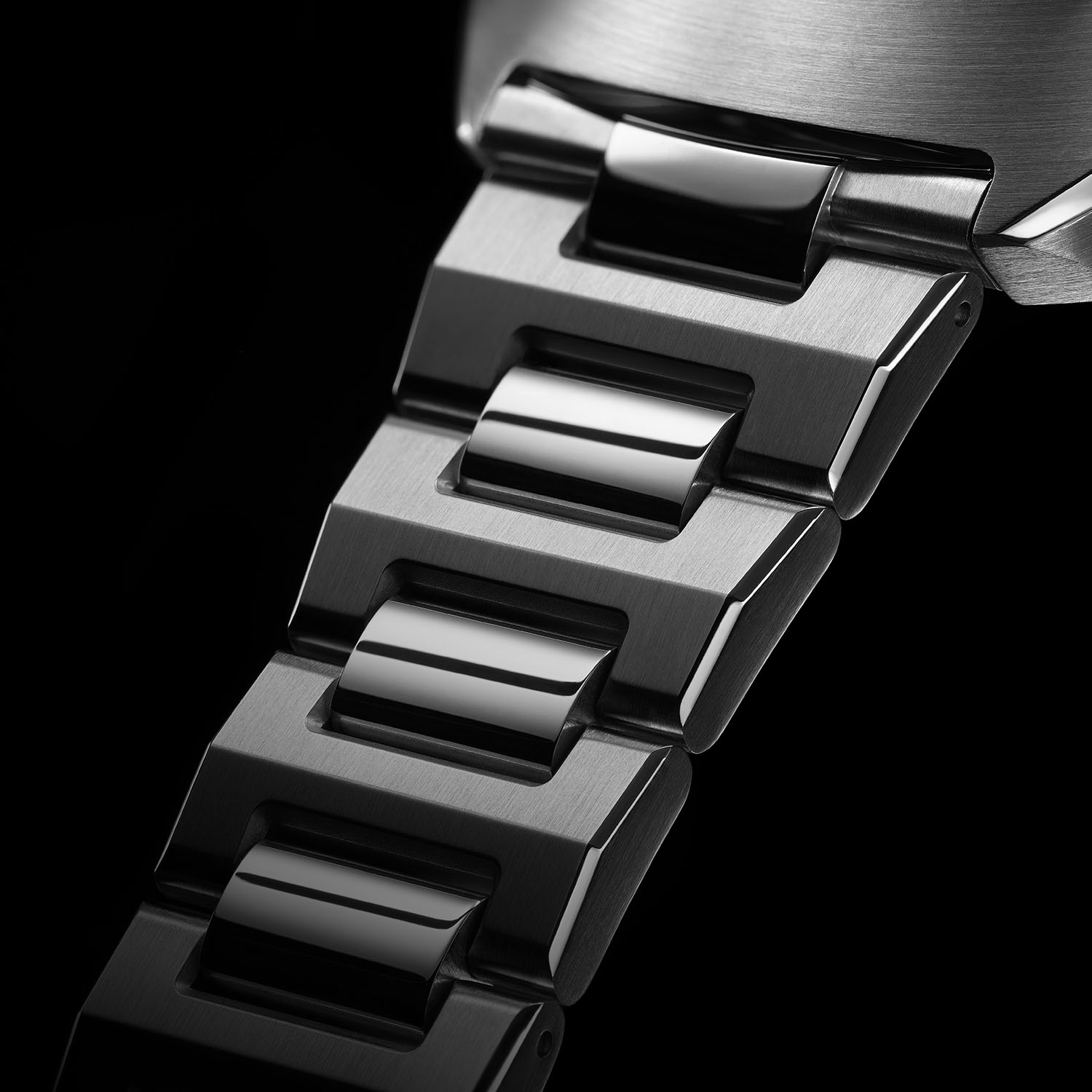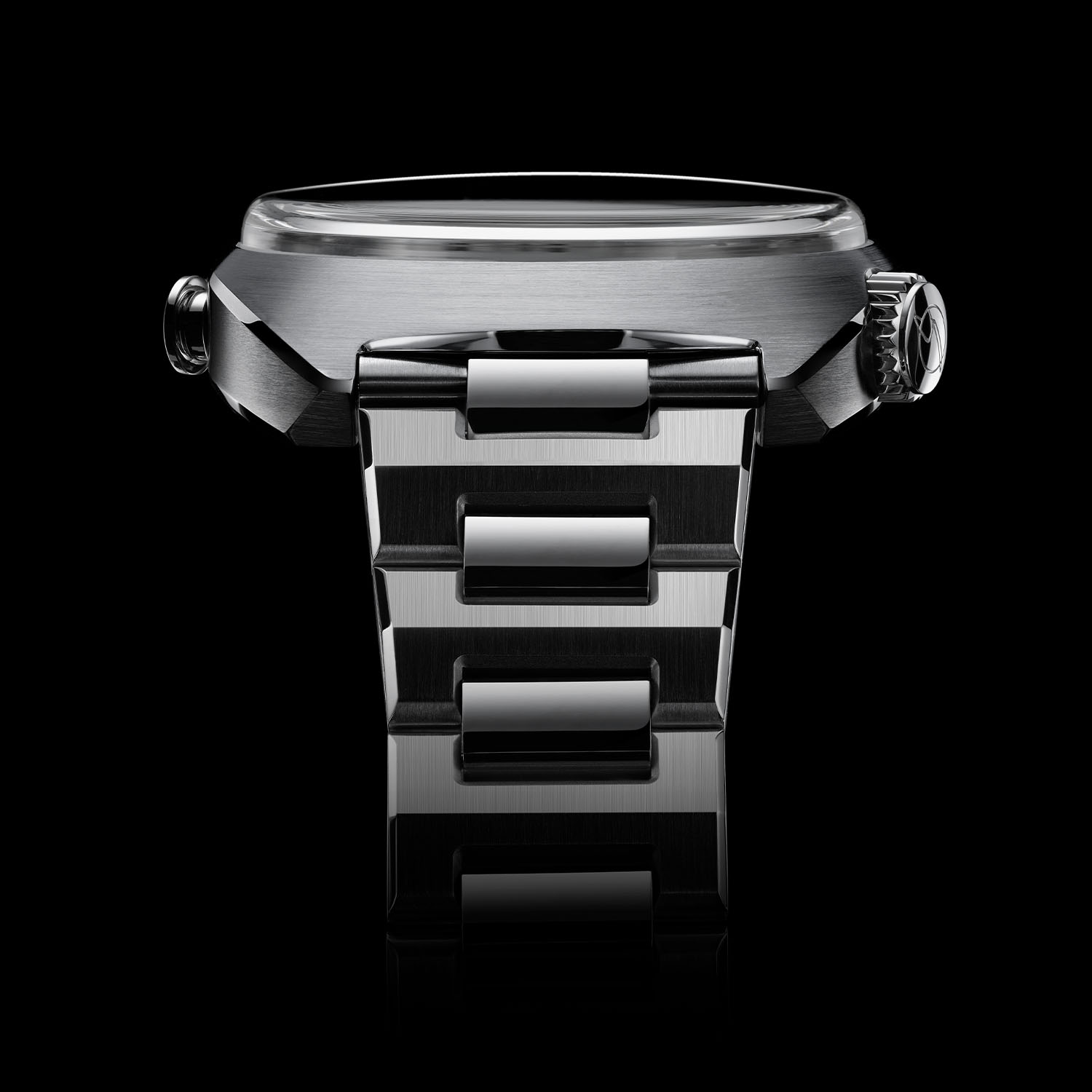Meet 1969, The New and More Compact Collection of Singer Reimagined
Vintage style, racing vibes, wrist-friendly size and still high-end chronograph movements.

Behind the name Singer Reimagined is another brand that is not related to watchmaking, but that crafts some of the most desirable restomoded Porsche 911s, Singer Vehicle Design. Since car guys are often watch guys and vice-versa, Rob Dickinson, founder of Singer, decided it was time to create a watch as remarkable as his reimagined and restored 911s. Rob teamed up with two men with serious watchmaking track record; Marco Borraccino (a watch designer), and Jean-Marc Wiederrecht (Agenhor). The result, the Singer Reimagined Track 1. A nostalgic late-1960s design, a cutting-edge chronograph movement and a watch that was fueled by passion. After several iterations of the Track 1 and the second model, the Flytrack, it is time for the brand to evolve with a new, slightly less radical yet highly appealing range of models, the new Singer Reimagined 1969 collection.
The idea behind the two new Singer Reimagined 1969 models – chronograph and timer – is not to make a revolution, but more to offer the same spirit as before, with more retro elements. Basically, the name says it all; 1969… A year of crazy innovation in watchmaking, with the launch of 3 pioneering movements, the first automatic chronographs on the market – El Primero, Calibre 11/Chronomatic and Calibre 6139. And there’s more… Woodstock, the Moon landing, the Beatles’ Abbey Road album or the first Concorde flight. With this new collection, Borraccino wanted to create a watch that was typically Singer Reimagined, yet designed as it could have been conceived and released in that precise year.
The recipe is simple on paper… The signature case shape of the brand, which has always been deeply rooted in the late 1960s (a typical helmet-like, pilot’s tonneau case), but adorned with warmer elements, less technical cues than before, more classic materials and, the main element to be considered here, a fairly reduced case size. Until now, all Singer Reimagined watches, either the highly complex Track 1 or its slightly simplified brother, the Flytrack, have always been housed in 43mm cases. But that would have been irrelevant in 1969, don’t you think?
In addition to this reduction of the size, Borraccino has also decided to remove some of the originality of the display found on both Track 1 and Flytrack. These two models were almost entirely dedicated to their timing functions, with the classic display of the time relegated to the periphery of the watch – something that also explained the larger case – by the mean of discs. Now, with less space to play with, the display had to be revamped and slightly simplified, yet the strong character and distinctive style of the brand hasn’t been lost. Finally, besides some reworked movements, still of the highest execution, the brand also introduces a new steel bracelet.
The case of both the 1969 Chronograph and 1969 Timer are made of classic stainless steel, with brushed surfaces (circular brushed on top, straight brushed on the sides) and elegant polished bevels on the sides… Altogether, a case that would have been right in place on the wrist of a racing driver in the early 1970s. The two-piece case measures 40mm in diameter, with a thickness of 15.6mm (for both models). It combines a crown at 4 o’clock with originally-positioned pushers, either one at 2 for the Timer or 2 placed in an almost bullhead-style for the Chronograph. The 100m water-resistant case features a domed glass-box sapphire crystal on top and a see-through crystal on the back.
The dials of the 1969 Chronograph and 1969 Timer were at the centre of attention. Surely, the distinctive style of the brand, which recalls dashboards instruments found on the reimagined 911s of Singer Vehicle Design, is still present, including the hands with large central cap that have long been found on early 911s. But here, Singer Reimagined brings more warmth and a strong retro touch, thanks to a combination of a deep piano-black lacquer finish and gold-toned elements. Not only the tracks and applied markers are gold-coloured, but the dials are framed by an unexpected golden fluted ring. Orange touches on the hand give the final racing touch.
New to the Singer Reimagined 1969 collection is a steel bracelet, with edgy brushed H-shaped links designed after racetracks’ curbs shape, and rounded polished central links. More contrast and reflections are brought by the presence of polished chamfers on the sides of the links. Tapering from 22 to 18mm, this new bracelet incorporates an adjustable fitting system housed in the folding clasp. The micro-adjustment mechanism, with 21 steps to precisely adapt the length of the bracelet by up to 2cm, allows an optimal fit. It is closed by a signed folding clasp with brushed and polished surfaces, featuring two push-pieces.
The Singer Reimagined 1969 Chronograph
The first model in this new collection is basically a reduced and vintaged edition of the Track 1. As such, it uses the same base movement and features the same functions. This means that the chronograph indications are still centrally positioned with a display of the seconds (sweeping), minutes and hours (both jumping indications), as well as a tachymeter scale on the periphery of the dial. The main difference with a Track 1 watch is how the time of the day is displayed. Since the case has been reduced, the peripheral indication by discs was not an option anymore. Instead, the 1969 Chronograph features a large aperture at 6 o’clock with two discs rotating underneath the dial surface – one for the minutes, one for the hours – with an arrow-shaped pointer at the 6 o’clock position. The discs and arrows are coated with SLN.
Under the hood is a slightly revamped version of the award-winning and ultra-innovative Agengraphe movement (here named calibre 6365). An automatic integrated chronograph movement with the rotor positioned dial-side, which leaves an unobstructed view of the back of the calibre, it is based on a column-wheel architecture with a unique and patented clutch system – the hybrid proprietary Agenclutch. Comprising 491 components, all meticulously finished, it has now an upgraded power reserve of 72 hours (just like the H. Moser & Cie Streamliner Flyback Chronograph 2.0, since Agenhor is now owned by the same group).
The Singer Reimagined 1969 Chronograph will be produced in no more than 50 pieces in 2023 and is priced at CHF 51,000 (excl. taxes).
The Singer Reimagined 1969 Timer
Just like the chronograph above, the new Singer Reimagined 1969 Timer is an evolution of the Flytrack model. A watch that could have once been named a Chronostop (something that Omega was very good at making in the 1960s), it is a watch with an unusual display and function. Basically, a zero-reset timer with a flyback function where the central sweeping hand is continuously running but that can be reset to zero by pressing the pusher at 2 o’clock – making it a 60-second counter.
Contrary to the Flytrack, which displayed the hours thanks to a disc on the periphery of the dial, the new 1969 Timer features, for the first time at Singer, a more traditional time display. The time is classically indicated by central hours and minutes hands, with the central seconds completing this trio of hands. And when the latter runs in a normal way, it simply becomes a 3-hander. However, under the dial is yet another impressive movement, the calibre 6363, a variation of the Agengraphe that has been simplified and is now hand-wound. A proprietary clutch system allows the central seconds hand to be dissociated from the movement, while kept still, and to be re-engaged for motion as soon as the push-button is released. This movement also boasts 72 hours of power reserve now.
The Singer Reimagined 1969 Timer will also be produced in no more than 50 pieces in 2023 and is priced at CHF 29,900 (excl. taxes).
For more details, please visit singerreimagined.com.















